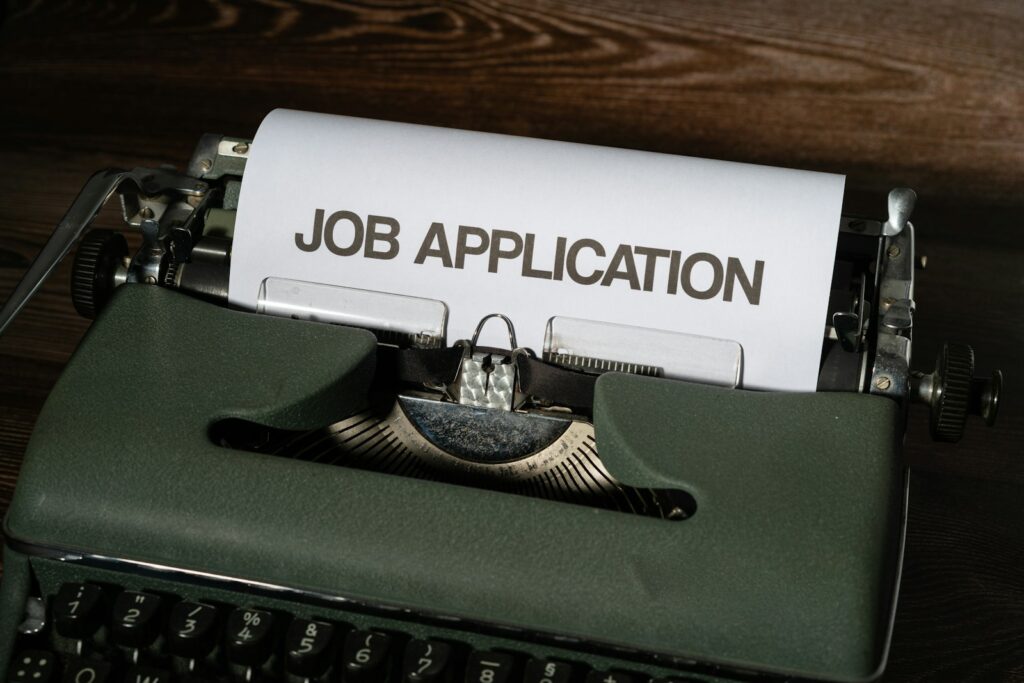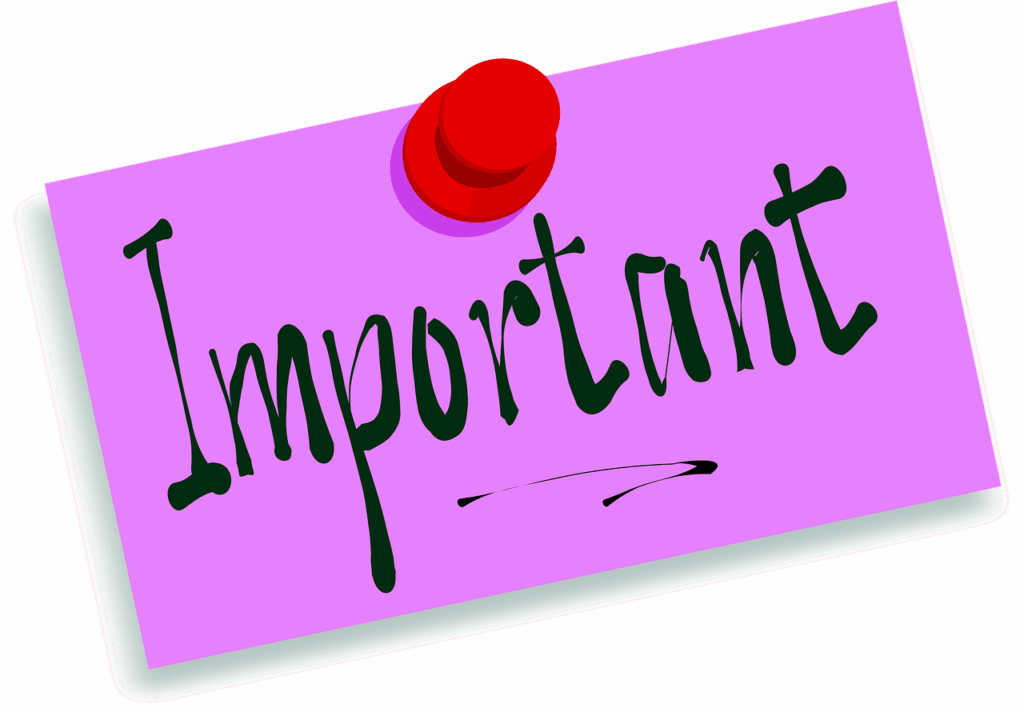
In today’s competitive job market, your resume isn’t just a document; it’s your first, and often only, chance to make a lasting impression on a potential employer. You’ve likely spent countless hours researching what makes a great resume, meticulously curating your experiences and skills to paint the perfect picture. But what if, despite all your efforts, you’re still making critical errors that are silently pushing your application to the rejection pile?
It’s a common misconception that simply knowing what to include is enough. The truth is, many job seekers inadvertently sabotage their chances by making easily avoidable mistakes that scream “inattentive” or “unprofessional” to hiring managers. Recruiters sift through hundreds, sometimes thousands, of applications, and a single misstep can mean your resume never even gets a second glance, let alone reaches human eyes.
This in-depth guide is designed to empower you by shedding light on the worst mistakes people make when crafting their resumes. We won’t just tell you what’s wrong; we’ll show you exactly how to detect, fix, and completely avoid these pitfalls, transforming your resume from a potential liability into a powerful tool that propels you toward your dream job. Let’s dive into the first seven crucial errors to eliminate from your application strategy.

1. **Spelling and Grammatical Errors**
There’s nothing quite as damaging to your professional image as a resume riddled with typos and grammatical errors. It might seem like a small oversight, a simple slip of the finger, but to a hiring manager, it communicates a profound lack of attention to detail and professionalism. In a world where precision is valued, such mistakes immediately raise red flags about your meticulousness and dedication to quality work.
Consider this stark reality: research has shown that “only 33,881 of the 92,989 resumes analyzed were spelling error-free.” This means that an astounding “around 63% of resumes were full of mistakes,” a statistic that should alarm any job seeker. Such a high percentage of errors makes it abundantly clear why recruiters view even the smallest typos or grammatical errors as “a huge turn-off,” indicating you might be careless or uncommitted.
Luckily, this is one of the easiest mistakes to fix. The best approach is to simply “double-check the entire resume by using one of the numerous proofreading tools available online, such as Grammarly.” These tools can catch many errors that a quick read-through might miss. For an added layer of security, “you can also ask a friend or a family member to read the document if you need another pair of eyes,” offering a fresh perspective that can spot overlooked issues.
Ultimately, every single word on your resume is a representation of you. A flawless document demonstrates diligence, care, and respect for the application process. Don’t let easily preventable mistakes be the reason a recruiter bypasses your otherwise impressive qualifications; a clean, error-free resume ensures your competence shines through without distraction.
Read more about: Mastering ‘Worse’ and ‘Worst’: 14 Crucial Distinctions for Impeccable English

2. **Overly Designed or Graphic-Heavy Resumes**
In an effort to stand out, many job seekers fall into the trap of creating overly designed or graphic-heavy resumes, believing that flashy visuals will capture attention. While creativity is commendable, especially in certain fields, cramming your resume with images, graphs, or intricate designs is a critical misstep that can do more harm than good. A resume’s primary purpose is clear, concise communication of your qualifications, not to serve as a design portfolio, unless specifically applying for a graphic design role.
One major reason to “definitely refrain from including them in your resume” is their inherent distractiveness. “Such elements distract hiring managers from seeing what really matters on your resume” – your skills, experience, and achievements. Instead of focusing on your value proposition, recruiters might get sidetracked by the aesthetics, or worse, perceive it as unprofessional for non-design-related positions.
Even more crucial is the issue of Applicant Tracking Systems (ATS). A significant portion of resumes are first screened by ATS software before ever reaching a human recruiter. “ATS may not recognize visuals, and your resume will be illegible for the software, which means it can easily get rejected before it even reaches recruiters.” The context explicitly states that “infographic resumes can’t be read by applicant tracking systems,” meaning your meticulously designed resume could be discarded before anyone sees it, regardless of its content.
To avoid this costly mistake, embrace simplicity and readability. If you genuinely want to showcase your visual flair or creative projects, “you can do it indirectly by leaving your LinkedIn profile on your resume or adding the link to your portfolio to it.” This strategy allows recruiters to access additional, relevant information at their discretion, providing “your job application letter a more human touch and still leave room for recruiters to find you interesting” without jeopardizing its initial screening.

3. **Focusing on Responsibilities Instead of Achievements**
A common resume pitfall is merely listing the tasks and responsibilities you held in previous roles, rather than highlighting your actual achievements and contributions. While outlining your duties provides a basic understanding of your past positions, it doesn’t effectively demonstrate your impact or showcase how you excelled. Recruiters aren’t just looking for someone who can perform tasks; they’re looking for someone who can deliver results and add tangible value.
To illustrate this crucial difference, consider these two statements: “Charged with marketing Project X” versus “Led the marketing initiatives of Project X, driving over $200,000 in sales for the quarter.” The first is a responsibility, bland and unrevealing. The second, however, is a powerful achievement, quantifying the impact and demonstrating initiative. It’s clear which one is more convincing and captures attention.
Recruiters consciously “always look for the first” (achievements) because, as the context explains, “they know exactly what your responsibilities were – all the other candidates for the position probably had the same ones.” Your responsibilities are generic; your achievements are unique to you and provide concrete evidence of your capabilities. Focusing on achievements shows how you “excel at your role,” differentiating you from other applicants.
To rectify this, meticulously review each position listed in your work experience. “Think of all relevant achievements within each position… and make sure you emphasize them enough.” The key is to quantify your contributions whenever possible. For this purpose, “you can always use some power words and action verbs” to describe your accomplishments vividly. Remember to include details on “The Results” (explained in numbers), “The How” (what you did), and “Timeframe” (when you achieved these results).
It’s worth noting a “Pro Tip”: not every single career is results-oriented. The context wisely points out, “If you’re a server, for example, you can’t really say: “Served 500+ tables my entire career, delivering amazing customer experience.” This just sounds super awkward. If your profession isn’t results-oriented, it’s totally OK to stick with responsibilities instead of achievements.” Apply this guidance thoughtfully to ensure your resume is both impactful and authentic to your career path.
Read more about: Journey Through the Stars: Unraveling NASA’s Decades of Discovery and Exploration

4. **Poor or Inconsistent Formatting**
Imagine picking up a book with uneven margins, random font changes, and inconsistent spacing – it would be an immediate turn-off, making the content difficult to digest. The same principle applies to your resume. Poor or inconsistent formatting is an aesthetic and functional flaw that screams unprofessionalism and can make your resume an “eyesore and off-putting for hiring managers.” A visually appealing, easy-to-read document is paramount for securing a recruiter’s sustained attention.
The range of formatting errors is broad and often overlooked. It includes seemingly minor details like “resume margins that are too wide or too narrow,” using an “unprofessional font type,” or an incorrect “font size.” Beyond these, critical issues extend to “wrong use of upper and lower case letters,” “improper line spacing,” “bullet points that aren’t aligned, resume content that’s centered rather than left aligned, not enough or too much white space, changes in formats at different points in the resume, inconsistent punctuation, and so on.” Any of these inconsistencies can create a jarring experience for the reader.
To combat these issues, adhere to professional standards. For fonts, “use fonts like Arial, Times New Roman, Georgia, or even Helvetica.” These are universally readable and professional. The context warns, “As fun and funky as Comic Sans and similar flowery fonts may be, they definitely don’t scream professionalism or ATS readability.” Your font size is also critical; “shouldn’t exceed 12pts” for body text, though “you can use bigger letters (up to 16pts) for section titles,” ensuring readability without being overwhelming.
Proper alignment also contributes significantly to a clean look. “Your text should be properly aligned. While the section titles can be center-aligned, you should use left alignment for normal text.” The ultimate solution to avoiding these countless potential missteps? “The best way to prevent bad formatting is to use a resume template from a resume builder instead of downloading your own template and modifying it.” These tools ensure consistency and a polished appearance, preventing distractions and letting your qualifications truly shine.

5. **Irrelevant, Fluff, or Obvious Skills**
Your skills section is a prime piece of real estate on your resume, meant to showcase what you can uniquely bring to a role. However, many job seekers dilute its impact by including skills that are either irrelevant to the target job, generic “fluff,” or so obvious they don’t need mentioning. This approach not only wastes valuable space but also fails to make a compelling case for your candidacy, leaving recruiters unimpressed.
The most critical aspect of the skills section is “tailoring your skills list to the job position you’re applying for.” A common issue, especially among “entry-level resume examples,” is that “job candidates usually have trouble choosing the right skillset.” They often “don’t think about which of their abilities are relevant to the job they’re interested in,” instead listing everything they think they possess or skills that are “completely unimportant.”
Then there are the “fluff skills.” Phrases like “Great critical thinking skills,” “Team-player,” and “Organized” sound good, but as the context points out, “just about anyone can claim to have them.” Recruiters have seen these countless times, and they’ve become so commonplace that they “are not fazed by them anymore.” Including them is “just wasting space” because recruiters will “just skip over them entirely,” looking for something more substantial.
Equally problematic are “obvious skills.” In “2025,” it’s “pretty much implied that you can use a computer, Microsoft Office, Excel, and the likes of them.” Listing these basic competencies, unless specifically requested or unusually advanced for a role, also constitutes “wasting space you could be using to better present yourself.” The goal is to highlight what makes you stand out, not what makes you average.
Instead, focus on “more hard skills that you can back up with experience (as opposed to overused soft skills)” and “more technical skills that set you apart from other candidates.” Examples provided include “Google Analytics,” “HTML & CSS,” “Any Programming Language,” “Salesforce,” “Dreamweaver,” and “Photoshop.” By listing skills directly relevant to the job description and demonstrating specialized expertise, you show the employer that you’re precisely what they’re looking for.

6. **Confusing a Resume with a Cover Letter**
A resume and a cover letter serve distinct, yet complementary, purposes in your job application. A common, and detrimental, mistake is to blur these lines, attempting to make your resume function as a cover letter. This often manifests as job seekers using their resume space to express their enthusiasm for a company or their desire for a specific role, rather than focusing on the factual presentation of their professional history.
Some individuals genuinely “believe that modeling their resume as a cover letter example can enhance their chances of securing the job they want.” Consequently, they “are using this space to let recruiters know how much they want to work for a specific company.” While enthusiasm is great, its place is in the cover letter. The resume, in contrast, should be a concise, objective summary of your qualifications.
The distinction is clear and crucial: “A resume should contain the details of your professional history and educational background.” It’s a snapshot of your past accomplishments and capabilities. “While a cover letter should serve as an addition to your resume.” It’s the personalized narrative, the opportunity to explain your motivations and how your unique story aligns with the company’s needs.
A cover letter “is supposed to provide the information you didn’t have a chance to list in your resume and further convince the potential employer that you’re the right person for the position.” It allows for a more persuasive, narrative approach. Your resume, however, needs to “list the information that could actually catch the attention of hiring managers” in a structured, scannable format – things like specific job titles, quantifiable achievements, and relevant skills. Mixing these formats is a “bad idea” as it diminishes the effectiveness of both documents and can lead to a confused or uninterested recruiter.
Read more about: Unlock Email Mastery: 12 Smart Ways ChatGPT Can Transform Your Professional Correspondence and Boost Productivity

7. **Using Exaggerated Language or Buzzwords**
In an attempt to impress and stand out, many job seekers resort to using overly flowery language, buzzwords, or exaggerated claims on their resumes. This approach, while well-intentioned, often backfires, making you sound pretentious, unauthentic, or even untrustworthy. Instead of highlighting your strengths, it can create a “melodramatic” impression that recruiters quickly dismiss.
“What makes resumes melodramatic is using keywords and expressions that exaggerate your experiences and skills.” This also encompasses including “too many buzzwords” or “jargon, acronyms, or any other flashy words to make yourself sound like a ‘superstar hire.'” While confidence is good, hyperbole isn’t. It suggests a lack of substance behind the grand claims.
Common examples of such buzzwords include phrases like “hard worker,” “perfectionist,” “innovative,” “creative,” and “results-driven.” The context clearly advises, “Unless your accomplishments can warrant the buzzwords, you should actively avoid including them.” Without concrete, quantifiable achievements to back them up, these terms become empty clichés that do little to persuade a hiring manager of your actual capabilities.
Recruiters are highly skilled at spotting exaggeration. An inflated summary or job title “may catch recruiters’ attention, but not every attention is good, especially if you come across as pretentious and full of yourself.” It can lead to skepticism and a quick dismissal of your application. Honesty and specific detail always outweigh bombastic language.
To avoid this common mistake, simply “explain what you do professionally without adding any cringy keywords to it. Stating your title as it is will be more than enough!” Focus on clear, factual descriptions and quantifiable results. “Find alternative ways of saying and showcasing your qualifications” by using strong action verbs and data-driven statements that genuinely reflect your contributions, letting your achievements speak for themselves without the need for embellishment.
Read more about: Unmasking the Self: 10 Telltale Signs Psychologists Identify as Narcissistic Traits

8. **Photos and Personal Information**
Adding a photo to your resume might seem like a way to make a personal connection, but it’s largely a practice to avoid. It’s not typically necessary unless a specific job description explicitly asks for it, and even then, such requests are rare, largely due to anti-discrimination laws designed to prevent bias in hiring. Focusing on your qualifications, not your appearance, is key for most roles.
Even if a photo is requested, getting it wrong can be detrimental. A badly sized or unprofessional picture can immediately detract from your resume’s credibility. To steer clear of these issues, ensure any required photo is approximately “2×2 inches (or 5×5 cm),” that “your face is fully visible in the picture,” and that you “take a professional, high-quality photo.” This level of detail shows you take the application seriously.
Beyond photos, your personal contact information also needs careful attention. Basic errors here can easily prevent potential employers from reaching out. Avoid any “abbreviations and unprofessional emails you created years ago” that might give a wrong impression. It’s crucial to “make sure you haven’t made any typos, as a wrong letter or digit can easily prevent potential employers from getting in touch with you.”
Furthermore, while you need to be reachable, you don’t need to overshare. “You don’t need to provide your full home address—mentioning your city and country will be enough.” More broadly, avoid cluttering your resume with details like “political affiliations, ual orientation, marriage status, family dynamics, salary expectations, reasons for leaving your last job, unrelated hobbies, and other personal information that don’t belong on your resume.” These types of “super personal” details are deemed “unprofessional” and can lead to immediate rejection, as employers are primarily focused on your expertise and professional fit.
Read more about: How to Uncover a Used Car’s Past: A Consumer’s Guide to Identifying Former Rentals, Taxis, and Police Vehicles

9. **Online Presence**
In our hyper-connected world, your online presence is practically an extension of your resume, and it’s almost guaranteed that HR representatives will check yours before making a hiring decision. This means your social media profiles need to reflect the same level of professionalism you project in your application documents. An inappropriate photo or unprofessional posts can quickly undo all your hard work on a stellar resume.
Consider the potential fallout: a “bad online presence” can prevent you from landing a job, just as easily as a bad resume. While you’re allowed to have personal opinions, constantly “writing negative comments on people’s posts” or “putting people down all day on social media” reflects poorly on you. This kind of online behavior, according to the context, makes you a “worst hire” in the eyes of potential employers, regardless of your resume’s quality.
The good news is that you don’t necessarily have to scrub your entire digital history clean. If you have cherished photos from a trip, say, “your trip to the Maldives,” that you’re unwilling to delete, there’s a simple fix: “just make sure they’re hidden so that only your friends can see them!” This allows you to maintain your personal memories while ensuring your public profile remains professional and employer-friendly.
Remember, “everything you post online will reflect on you just like your resume would.” While a resume might be fixable with targeted revisions, repairing a damaged online reputation can demand “a lot more work to make improvements upon.” Proactive management of your digital footprint ensures consistency in your professional brand, presenting a cohesive and positive image to recruiters who are inevitably looking beyond the confines of your resume.
Read more about: When Home Becomes a Hotel: The Heart-Wrenching Realities of Family Rent Conflicts and Financial Betrayal

10. **Job Title Inflation**
It’s natural to want your resume to stand out in a competitive job market, but inflating your job title can be a major misstep that backfires spectacularly. While a grand-sounding title might initially “catch recruiters’ attention,” the context makes it clear that “not every attention is good, especially if you come across as pretentious and full of yourself.” Authenticity is valued far more than perceived grandeur.
This issue extends beyond just titles; an “inflated resume summary, too!” can create the same negative impression. The danger is particularly high because “a background check is more common than you think.” Recruiters frequently “contact your previous employers and ask them about you,” making any embellishment or outright lie about your past role easily discoverable. Honesty truly is the best policy here.
Lying or exaggerating your job title is considered one of the “worst resumes” practices because it immediately erodes trust. Once a discrepancy is found, it raises questions about your integrity and other claims on your resume, potentially leading to immediate disqualification. It’s far better to “explain what you do professionally without adding any cringy keywords to it. Stating your title as it is will be more than enough!”
Focus on accurately reflecting your responsibilities and achievements within your actual title, rather than trying to elevate it artificially. A genuine representation of your professional journey, backed by verifiable experience, will always be more impactful and respected by hiring managers than any attempt at “boosting titles and positions for attention.” Your real contributions will shine brighter without any forced elevation.
Read more about: Don’t Trip at the Starting Line: The Worst Social Security Mistakes People Make When Filing at Age 62

11. **Referencing Conflicting Employers**
Including a list of references on your resume can be a powerful asset, but it requires careful consideration to ensure it helps, rather than harms, your application. The crucial decision lies in selecting the right individuals who will provide positive endorsements of your professional capabilities and work ethic. Not every past colleague or manager is suitable, especially those with whom you had disagreements.
The context is very clear about who to avoid: “That coworker you disagreed with all the time? Not a chance. That boss who fired you for going against their beliefs? Definitely not a good idea.” Listing individuals who might offer lukewarm or even negative feedback is a significant blunder that can derail your candidacy before it even gets off the ground. Your references should reinforce your strengths, not expose past conflicts.
Instead, the “best bet is to add references you’ve had a good relationship with.” These are the people who can genuinely speak to your skills, contributions, and positive attributes, providing a credible and enthusiastic endorsement. Their positive feedback can significantly bolster your application and give recruiters confidence in your suitability for the role.
Furthermore, precision in providing contact details for your chosen references is paramount. “Also, make sure you provide the correct contact information so that the recruiters can reach out to those people without complications.” A recruiter unable to connect with a reference due to outdated or incorrect information might simply move on to the next candidate, costing you a valuable opportunity. Thoughtful selection and accurate information make all the difference.

12. **Unrelated Work Experience**
When crafting your resume, it’s essential to understand that not all work experience is equally valuable for every job application. A common mistake is to include every single position you’ve ever held, regardless of its relevance to the role you’re currently pursuing. This can clutter your resume with “unnecessary and irrelevant job positions” that simply “will not add any value.” Your resume is prime real estate; use it wisely.
The golden rule is to “only mention relevant experience that aligns with the job you want to apply for.” For instance, if you’re targeting an IT position, listing your extensive experience “as a waiter in a fancy restaurant” is generally “not advised,” even if you spent a significant portion of your career in that role. Recruiters are looking for evidence that you possess the specific skills and background needed for *their* job.
This becomes especially critical for career changers or entry-level candidates. While an empty work experience section might be an exception where some “unrelated experiences” could be included, the overall strategy remains to demonstrate relevance. The context states that “a hiring manager getting a resume from a completely unqualified candidate won’t be willing to entertain an interview with them, they’ll just instantly reject the candidate.”
To overcome this, if your direct professional experience is limited, focus on transferable skills, relevant courses, internships, or side hustles that show initiative and a genuine effort to learn the skills required for the target role. The aim is to build a “connection or transferable skills to position yourself for a career change,” ensuring that even diverse experiences are framed in a way that highlights their value to your desired career path.
Read more about: Beyond the Beaten Path: Unearthing 13 Forgotten Utility Vehicles That Are Off-Road Adventure Gems
13. **Using the Same Resume for All Applications**
One of the most significant and frequently committed resume blunders is submitting a generic resume for every single job application. This “major no-no” immediately signals to potential employers that you haven’t taken the time to research their company or the specific requirements of the role. Such an approach can make you “come across as uninterested or lazy,” severely diminishing your chances of securing an interview.
Every job is unique, and employers are looking for candidates who demonstrate a clear understanding of their needs and how their skills align. A “generic” resume “won’t interest the hiring manager at all” because it fails to highlight what makes *you* a perfect fit for *their* specific opening. It’s not enough to simply have the skills; you must actively demonstrate their relevance to the position at hand.
The solution lies in strategic customization. Start by “tailoring your skills to the job position you’re interested in.” If it’s an IT job, ensure you “list tech-related skills, courses, and projects on your resume.” This targeted approach extends to other sections as well: “Do the same with the hobbies and interests you want to mention in your resume. Just make sure that these are somehow related to the role you’re applying for.”
Furthermore, critically evaluate your “job experiences that may represent you as a perfect candidate for the desired job.” As the context advises, “If you want to land an IT job, you can list any tech-related job positions you’ve held during your career (programmer, developer, etc.). Avoid mentioning side hustles such as babysitting, waitressing, and similar.” While having a “base resume can allow you to pull points for a tailored resume,” remember that “your base resume shouldn’t be the one you apply to all jobs with.” Creating a few variations tailored to different role types can save time while still ensuring a personalized application.
Read more about: Highway Heartbreak: Unpacking the Complex Realities of EV Charging for Today’s Drivers

14. **Including Salary Requirements in a Resume**
It’s common for job seekers to have a clear idea of their desired compensation, but putting “salary requirements in a resume” is a critical error that should be avoided at all costs. Regardless of your personal financial situation or what you believe is an appropriate earning for the role, this information has no place on your initial application document. It can prematurely narrow your options or even disqualify you.
The key reason for this avoidance is strategic timing. The resume’s purpose is to secure an interview by showcasing your qualifications and value. Discussions about compensation belong much later in the hiring process, typically “once you reach the interview stage.” At that point, you’ll have a better understanding of the role’s scope, the company’s benefits, and can negotiate from a position of mutual interest rather than an upfront demand.
Including salary expectations too early can also work against you in several ways. If your stated figure is too high, you might be screened out before a recruiter even considers your full potential. If it’s too low, you could inadvertently undercut your value, making it harder to negotiate for a higher salary later on. The goal is to keep the door open for discussion, not to close it prematurely.
Remember, your resume should focus exclusively on your professional history and what you bring to the table in terms of skills and experience. “Avoid mentioning things outside of your work history” that are not directly relevant to your qualifications for the role. By keeping salary discussions separate, you empower yourself to navigate the compensation conversation effectively when the time is right, ensuring your skills and experience are the primary focus.
Read more about: Unpacking the Code: The 15 Most Controversial Hiring Practices Shaking Up Major Tech Companies Today
You’ve now armed yourself with a comprehensive understanding of the most common resume pitfalls, from the obvious to the subtle. By diligently applying these actionable strategies – double-checking for errors, embracing simplicity, quantifying achievements, and meticulously tailoring your application – you’re not just avoiding mistakes; you’re actively constructing a resume that truly stands out. Don’t let easily preventable errors keep you from your next big opportunity. Take control of your job search, refine your document with confidence, and get ready to land that interview!




